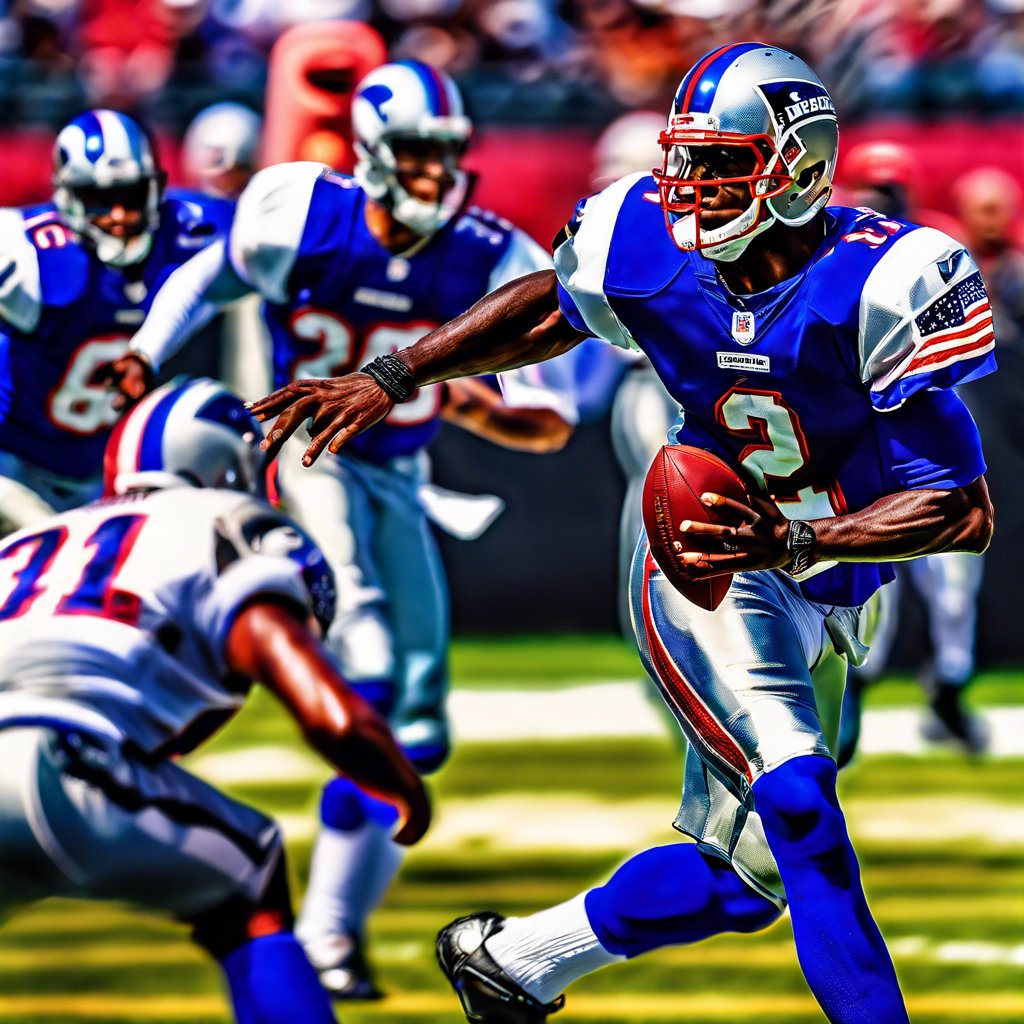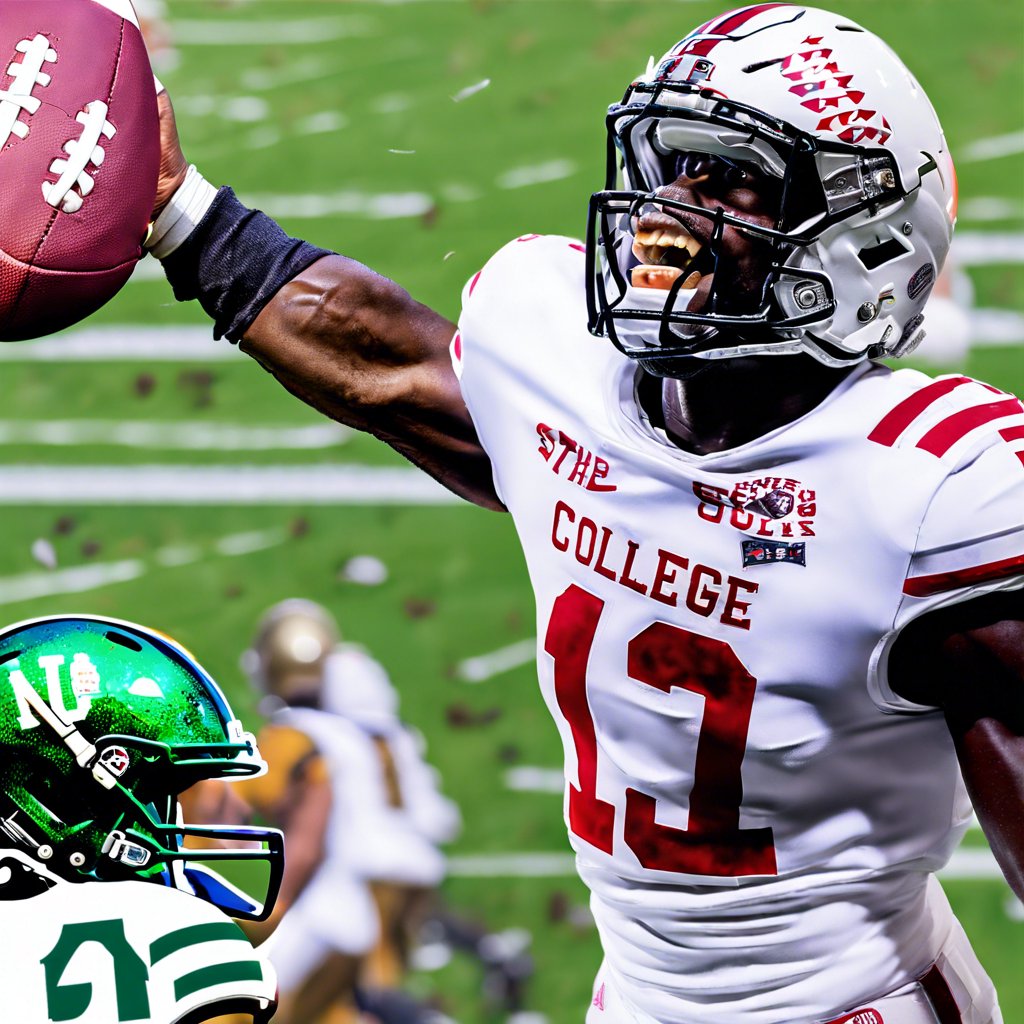The Evolution of Shedeur Sanders: A Closer Look
During Deion Sanders’ illustrious career as arguably the best press cornerback in football history, his on-field performance consistently matched his bold statements. He had an unparalleled ability to deliver on his claims, and his impact on the game was profound. However, his transition to coaching at Colorado has introduced a different narrative, particularly regarding his son, Shedeur Sanders, who is being touted as a potential top-five pick in the NFL Draft.
Shedeur Sanders, standing at 6 feet 1 inch and weighing 198 pounds, quietly emerged on scouting radars entering 2023 after two impressive seasons at FCS Jackson State under his father’s guidance. As Colorado’s starting quarterback, he threw for an impressive 1,251 yards, 10 touchdowns, and only one interception in his first three games. Yet, despite these numbers, the team’s record was a disappointing 1-8. While Shedeur showcased flashes of brilliance, neither he nor the team sustained a high level of performance throughout the season.
To truly understand Shedeur Sanders’ abilities, one must delve deeper than what was required with his father’s career. Despite this, Shedeur is a far more capable quarterback than many realize. With the right adjustments to the roster, he has the potential to prove himself for an extended period, rather than just in brief glimpses.
When Deion Sanders took the reins at Colorado, he inherited a program plagued by one of the worst run-blocking offensive lines in college football. Developing a robust run game is a gradual process, often taking years to cultivate, and cannot be achieved overnight. Sanders’ initial coaching staff, led by former Kent State head coach Sean Lewis, implemented a fast-paced, quick-strike offensive scheme that relied heavily on short passing. This approach has seen success at the Group of Five level and in certain Power Five conferences, but it came with its own set of challenges.
In this offensive strategy, the short passing game serves as a substitute for a traditional run game, with actual running plays called primarily to provide a breather for the quarterback. This method lacks the physicality that can set a tone for the game or challenge opponents strategically; it is fundamentally reactionary.
Given Colorado’s roster constraints, the strategy was somewhat acceptable, but the execution fell short. In fact, it was revealed that Shedeur Sanders faced an astonishing 197 pressures during the 2023 season, making him the most pressured passer in the FBS. This equated to a staggering pressure rate of 37%, with one in every three of his pass attempts being affected by defensive pressure.
| Quarterback | Pressures | Pressure Rate |
|---|---|---|
| Shedeur Sanders, Colorado | 197 | 37% |
| Ashton Daniels, Stanford | 175 | 45.2% |
| Cam Ward, Washington State (transfer to Miami) | 173 | 30.6% |
| Cade Klubnik, Clemson | 170 | 32.9% |
| Hudson Card, Purdue | 165 | 39.4% |
| Donovan Smith, Houston | 146 | 31.7% |
| Jaxson Dart, Ole Miss | 134 | 32.4% |
| Haynes King, Georgia Tech | 130 | 31.2% |
| Drew Allar, Penn State | 128 | 29.9% |
| Rocco Becht, Iowa State | 128 | 31.8% |
Following a particularly challenging loss against UCLA on October 23, where Shedeur faced a season-high 26 pressures, Deion Sanders took decisive action by demoting Lewis. This decision was motivated by the staggering 68 pressures Shedeur endured over a three-week span, a stark contrast to Oregon’s Bo Nix, who faced only 79 pressures throughout the entire season.
In response to these challenges, Colorado brought in Pat Shurmur, a former NFL head coach and offensive coordinator, to revamp the offensive strategy. The coaching staff also saw new additions focused on the offensive line and receiving corps, both with significant NFL experience. This time, all offensive line additions were sourced from FBS programs, with no junior college players involved.
Shurmur has placed a greater emphasis on the tight end position compared to the previous staff. Sav’ell Smalls, a 6-foot-3 former five-star edge prospect from Washington, will transition to tight end, while Colorado has signed Sam Hart, a 6-foot-5 tight end known for his blocking prowess from Ohio State.
The overall plan is clear: Colorado aims to evolve its college-style offense into something more akin to a professional scheme. Last season, Shedeur was among the least active quarterbacks in terms of play-action attempts, having only 21 such plays. While data suggests a strong run game isn’t essential for effective play action, establishing a credible run threat is crucial for maximizing the effectiveness of misdirection plays.
By incorporating more run-to-throw dynamics, Colorado can improve Shedeur’s situational advantages, both in terms of down and distance as well as overall protection. Additionally, Shurmur’s adjustments to the quick game, such as reducing the reliance on option routes, should enable the already accurate passer to release the ball even faster.
However, a significant portion of the 197 pressures and 52 sacks Shedeur faced last season can be attributed to his own decisions. While it’s understandable that a quarterback would instinctively respond to frequent hits, the reality is that elite quarterbacks must learn to navigate pressure efficiently. Deion’s bold claim about being able to dictate where his son gets drafted hinges on Shedeur’s ability to adapt to the common challenges faced by NFL quarterbacks, particularly when playing behind a less-than-stellar offensive line.
To enhance his game, Shedeur must refine his process in the pocket, particularly his dropbacks and footwork. Unlike his father, he isn’t the same caliber of athlete, nor does he possess the size to consistently pose a run threat. Nevertheless, his athletic anticipation and movement on the field evoke memories of Deion Sanders’ unique style.
Shedeur’s ability to create plays on the run is one of his defining characteristics, and it shouldn’t be diminished. However, he must focus on maintaining a strong base with his arm and eyes in the pocket, regardless of the circumstances — especially in this new offense, which may require concepts that take longer to develop.
While Patrick Mahomes exemplifies the standard for out-of-structure quarterbacking, a significant portion of his success comes from his effectiveness within the pocket. Mahomes’ ability to make plays often stems from keeping his eyes up and remaining engaged with the field, even when pressured. If Shedeur can harness his instincts while also demonstrating his capacity to execute from the pocket, his draft stock is poised to rise significantly.
| Quarterback | Off Target Rate | Air Yards/Attempt |
|---|---|---|
| Shedeur Sanders, Colorado | 7.7% | 7.9 |
| Carson Beck, Georgia | 8.9% | 8.1 |
| Cade Klubnik, Clemson | 9.3% | 6.5 |
| Dillon Gabriel, Oklahoma (transfer to Oregon) | 9.9% | 9.6 |
| Quinn Ewers, Texas | 9.9% | 7.8 |
| Cam Ward, Washington State (transfer to Miami) | 10.1% | 7.0 |
| Noah Fifita, Arizona | 10.2% | 7.5 |
| Tyler Van Dyke, Miami (transfer to Wisconsin) | 11.4% | 8.0 |
| Jaxson Dart, Ole Miss | 11.5% | 9.8 |
| Graham Mertz, Florida | 11.7% | 6.3 |
Shedeur’s athleticism is undoubtedly impressive. The reason he is viewed as a potential first-round prospect by many NFL analysts is his exceptional accuracy across various throwing situations. Whether on the move, across his body, or from challenging angles, Shedeur consistently delivers accurate passes. Even while operating in a quick-strike offense, he managed an impressive average of nearly eight air yards per attempt, significantly surpassing Bo Nix’s 6.6 air yards per attempt in a similarly styled offense.
Among returning FBS quarterbacks with at least 300 passing attempts, Shedeur ranked third in completion rate on deep throws traveling 30 air yards or more. He finished fourth in total completions, demonstrating his ability to effectively connect on challenging throws. Although he missed a few opportunities, he also made many successful plays.
His chemistry with Travis Hunter, considered one of the top wide receiver prospects in the nation, has been outstanding. This connection will undoubtedly bolster Shedeur’s prospects moving forward.
While Shedeur is fortunate to have Hunter as a target, the rest of his supporting cast last season did not match the talent level of the other top 2024 quarterback prospects, such as Caleb Williams, Jayden Daniels, Drake Maye, Michael Penix Jr., J.J. McCarthy, and Bo Nix. This issue has been addressed in the offseason with the addition of transfer receiver Will Sheppard, a 6-foot-3, 205-pound pass catcher who recorded over 150 receptions at Vanderbilt and is considered a 2025 draft prospect. Additionally, speedster LaJohntay Wester, standing at 5 feet 11 inches and weighing 167 pounds, brings over 2,500 receiving yards from Florida Atlantic and caught 108 passes last season, making him another legitimate NFL prospect.
As Colorado works to strengthen its depth chart and refine its offensive strategy to better protect Shedeur, the quarterback will have the opportunity to demonstrate his full potential. Yet, despite the impressive flashes in his game, significant gaps remain, particularly in his ability to effectively process route concepts and throw confidently over the middle.
This challenge was a prominent topic last spring, especially regarding quarterbacks such as Daniels and Penix. The intermediate area of the field, defined as throws between the hash marks of 10 to 22 air yards, is where NFL quarterbacks often excel. A proficient professional quarterback can throw accurately over the middle in traffic and on routes that require time to develop.
In 2023, Shedeur attempted only 10.8% of his throws in this crucial area, while other top prospects like Penix and Daniels were at 10.2% and 9.7%, respectively. The national average for starters was 11.6%.
Examining Shedeur’s performance in relation to air yards to the sticks, which measures the distance ahead or behind the first-down marker, provides further insight into his effectiveness:
| Player | 2023 Air Yards to the Sticks | Career Air Yards to the Sticks |
|---|---|---|
| Jalen Milroe, Alabama | 3.1 | 2.3 |
| Jaxson Dart, Ole Miss | 0.6 | 0.5 |
| Conner Weigman, Texas A&M | 0.2 | 0 |
| Carson Beck, Georgia | -0.7 | -0.5 |
| Riley Leonard, Duke (transfer to Notre Dame) | -1.0 | -1.4 |
| Quinn Ewers, Texas | -1.1 | -0.3 |
| Drew Allar, Penn State | -1.2 | -1.1 |
| Shedeur Sanders, Colorado | -1.6 | -1.1 |
| Cam Ward, Washington State (transfer to Miami) | -1.9 | -1.7 |















